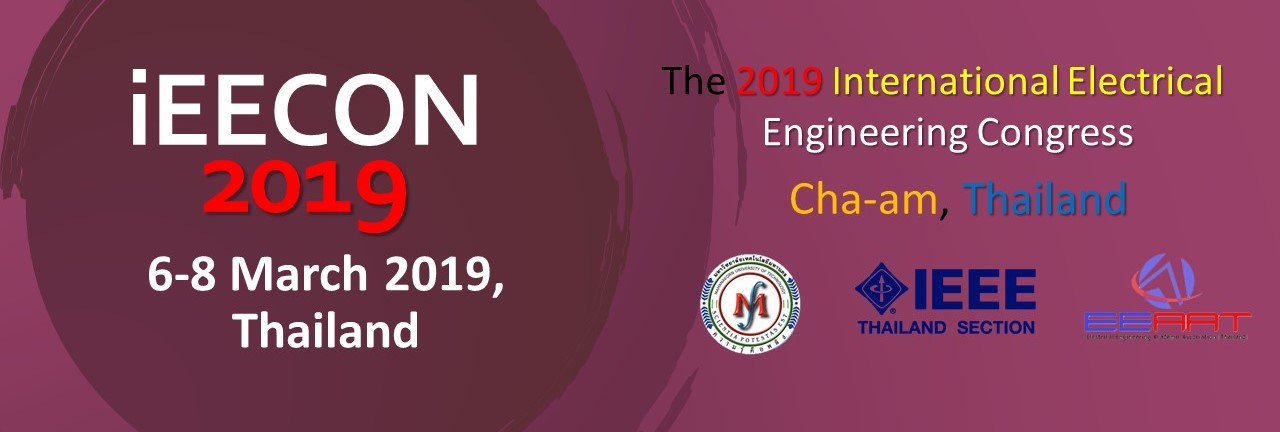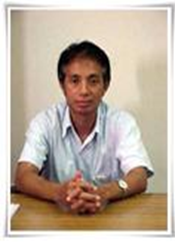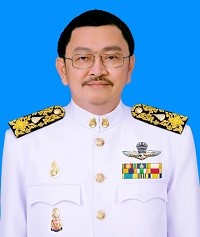
Invited Speakers
The Discussion on the Physics of the Barkhausen Criteria Based on the Second Order Differential Equation

Assoc. Prof. Dr. Pramote Wadkien
Research Field
Telecommunication Network
Affiliation
Department of Telecommunication Engineering, Faculty of Engineering, King’s Mongkud Institute of Technology Ladkrabang, Bangkok, Thailand 10520
Abstract
From the past to present, the Barkhausen criteria has played an important role for the electrical oscillator design. However, the physical meaning of the loop-gain value in the Barkhausen criteria for practical electrical oscillators is still unclear. In this paper, the Barkhausen criteria based on the second order differential equation has been described. The physical meaning of the loop gain value less than 1, equal 1, greater than 1 a little bit, and greater than 1, are interpreted. Furthermore, the interpretation is confirmed by the result of the practical Weinbridge oscillator’s experiment
Keywords Barkhausen criteria, electrical oscillators, second order differential equation
Title Hybrid Metamaterial Structure for Asymmetric Horn of Secondary Radar System

Assoc. Prof. Dr. Rangsan Wongsan
Research Field
Antenna and Microwave
Affiliation
Department of Telecommunications Engineering, Suranaree University of Technology, Nakhon Ratchasima, Thailand 30000
Abstract
The hybrid metamaterial is proposed for the performance improvement of an asymmetric horn for the secondary radar system. The hybrid metamaterial is the unification techniques of the structures of wire medium and woodpile Electromagnetic Band Gap (EBG), which designed at the operating frequencies of 1,060 MHz and 1,300 MHz, respectively. We used the EBG structure for improving the radar main beam with horizontal polarization, while the dielectric rods are organized at the right side of the EBG structure to control the direction of main beam at . Besides that, the wire medium structure has been used to improve the main beam of IFF (Identification Friend or Foe) system with vertical polarization and steer its beam shifted to the direction of comparing with the main beam of radar. In practice, the hybrid metamaterial will be installed in front of the aperture of asymmetric horn with the suitable distance. All appropriated parameters of the proposed hybrid metamaterial are optimized by using CST software. It is found that such the structure can improve the gain of both main beams more than 3 dB when compared to the gain that obtained from the conventional asymmetric horn. Moreover, we could retain the different directions of both main beam as followed in the specification of the original secondary radar system.
Keywords Horn antenna, Metamaterials, Electromagnetic band gap, Wire medium
Title Compact Non-uniform Metasurface for Efficiency Enhancement of Planar Wireless Power Transfer

Assoc. Prof. Dr. Sarawuth Chaimool
Research Field
Antenna and Microwave
Affiliation
Department of Electrical Engineering, Faculty of Engineering, Khon Kaen University, Khon Kaen, Thailand 40002
Abstract
Negative permeability (MNG) non-uniform metasurface with a compact size of 80×80 mm2 is proposed for power transfer efficiency (PTE) enhancement of planar magnetically coupled resonance wireless power transfer (PMCR-WPT) system. The PMCR-WPT system with the non-uniform metasurface is investigated by simulation and measurement. The simulated and measured results of PMCR-WPT system with the non-uniform metasurface achieved the maximum PTE of 59.4% and 54.7%, respectively. In addition, the highest PTE improvement obtained 42.2% for simulation and 35.5% for measurement compared with free space case. Moreover, the PTE of PMCR-WPT system with the proposed non-uniform metasurface case was approximately 2.3% greater than the uniform metasurface case over effective distances. The results indicated that the non-uniform metasurface can be applied for future wireless power transfer system.
Keywords wireless power transfer, magnetic resonant coupling, non-uniform, metasurface, evanescent wave amplification
Title Informative Technology for Public Health Applications

Asst. Prof. Dr. Pichitpong Soontornpipit
Research Field
1. Decision support and artificial intelligent systems
2. Data mining and database management
3. Healthcare systems
4. Biotelemedicine/ Biotelemedical systems
5. Wireless implantable devices
Affiliation
Department of Biostatistics, Faculty of Public Health, Mahidol University, Bangkok, Thailand 10400
Abstract
The field of health technology and applications has many progresses in recent year with new concepts and new techniques. This session will be a platform for researchers to present their novel results in areas of informative technology applications in health such as Wireless Biotelemetry, Clinical Support Systems, Statistical Methods, Mathematical Models, Health Data Science, Artificial Intelligent, Database Management etc. Any interest submission can directly contact the Session Chair.